
It allows to keep PV going, with more focus towards AI, but keeping be one of the few truly independent places.
-
Still working on the edit. I should have the full tutorial up this week. I haven't even started on the grading, but here is a comparison. The footage has been white balanced, and the black levels brought to 0, but that's the only correction.
Shot with no lights: ND .9 on windows, and silver reflector bounce outside window for key.
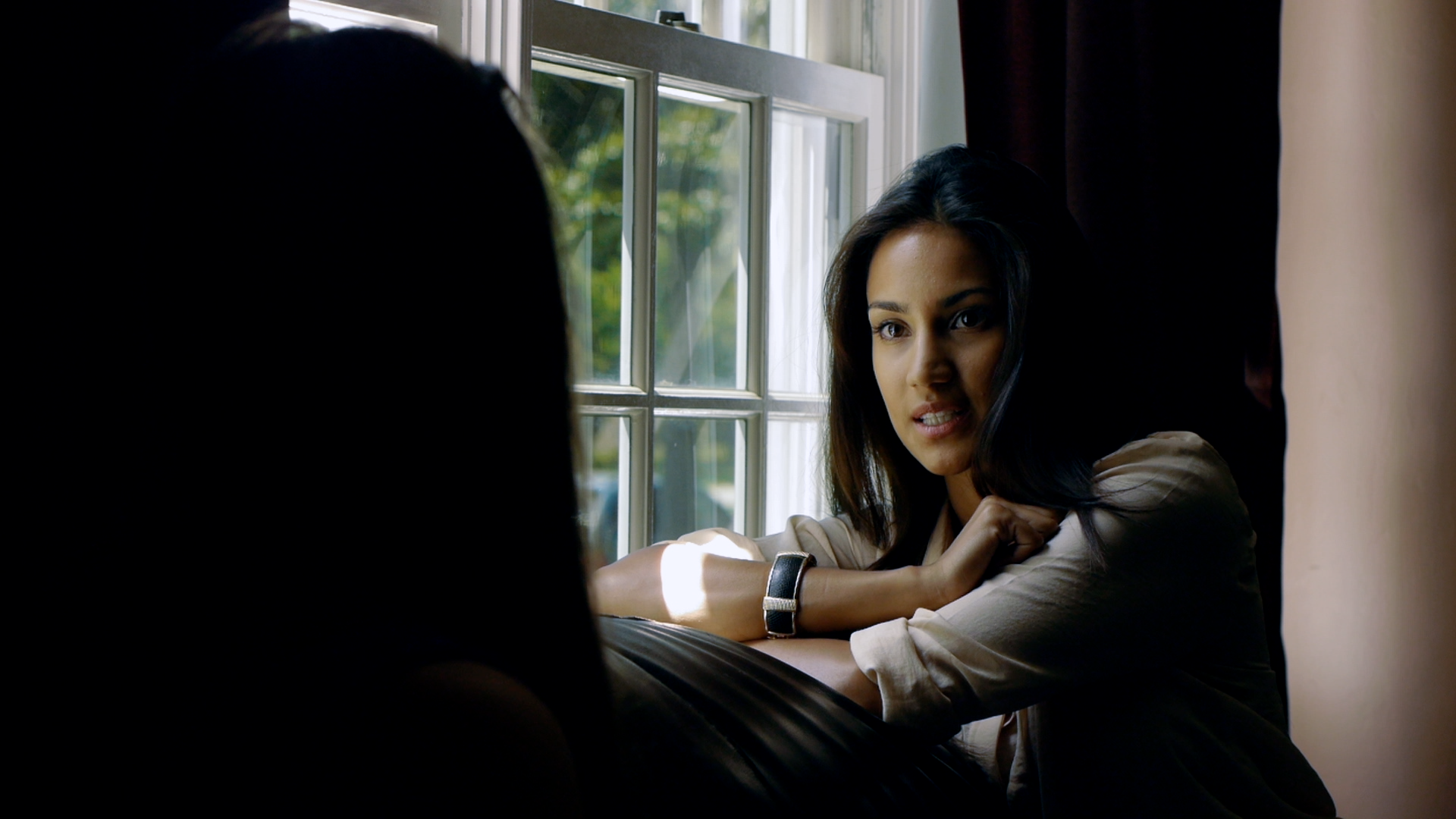
Exactly the same only with diffused 202 (Half CTB) hair light and fill.
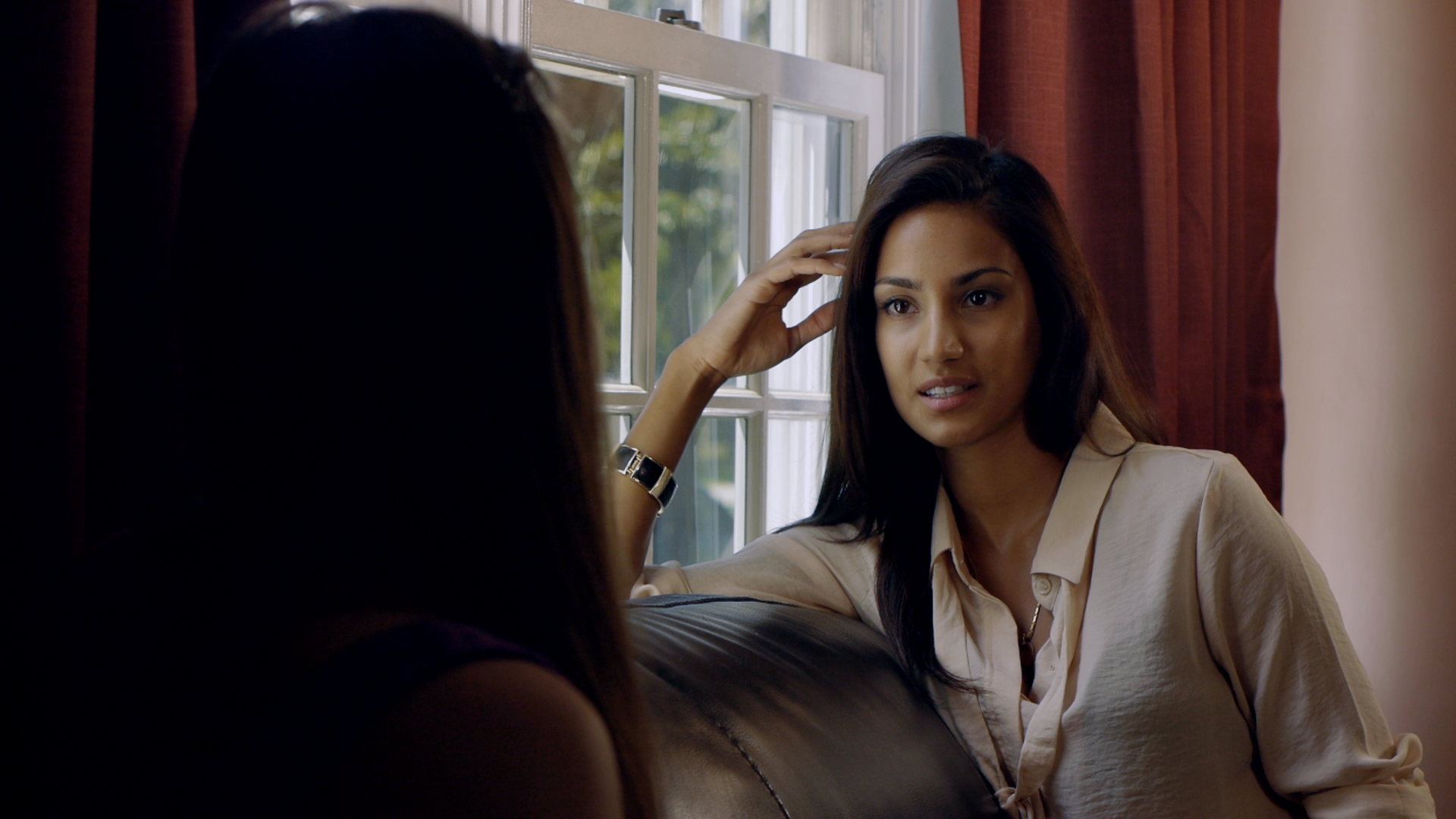

 LR TARA natural1.png1920 x 1080 - 2M
LR TARA natural1.png1920 x 1080 - 2M
 LR TARA zone.png1920 x 1080 - 2M
LR TARA zone.png1920 x 1080 - 2M -
@Gabel I hear you, most of my issues is how far will i stretch the image, since my style is most of the times that i would like to light less, doing it in the zone is important and working hard on that since my last shortfilm, where everything was "flooded" for equal soft exposures in 1 scene, the problem i find with exposuing in the zone is that it tends to get flat as in 2D space, trying to get it more like 3D space i find myself crushing the blacks or things that i don't find relevant for the picture, camera wise it's always a dilemma ofcourse, but lighting is imho the most important thing of Cinematography, and learning it, and mastering it takes a while a guess.
For example i find daylight interiors much harder to light then night scenes (interiors) The problem i find is that there is simply too much light, and always having in mind that it has to be realistic is something i find myself questioning, does it need to look realistic, there are windows camera left, so do i place my rimlight camera left? or can i simply 3 point light it with a nice rim and maybe some atmosphere by a smoke machine, these things are questions i ask myself all the time, and most of the times you hear DP's or directors complaining that it aint realistic or put a Fill Camera left because there are windows there.
Any thoughts about the 2nd line?
I have to mention that the windows in the above conversation are not visible on camera.
-
FYI here's a good example of lighting setup diagram. Yes it's for photo, but it would be great to see diagrams for video setup. Thanks.
http://www.flickr.com/photos/polvero/sets/72157615873440953/
-
@sicovdplas I'm hoping to remedy that with CGFS. We're still in the beginner stages, but eventually the master class will cover far more complex techniques.
-
It sort of depends on the camera. When shooting film, you of course want as much in camera. For digital, I always try to get as much as possible in camera, to an extent. It all depends on the limitations. Keeping everything within the zones is good, as it preserves information and with our digital cameras we don't get that nice rolloff, so want to keep as much as possible. But I keep the idea of the look on set, oftentime I might actually add a "LUT" in the monitor by adjusting to how I will grade it. See it sort of as film back in the old days (when it was very slow), where it was important to get a properly exposed negative for it to look well. Same thing with white balance: Set it correctly unless you 100% sure there won't be any changes made in post, as tinting it away from white is "easy" but tinting it to white is hard. But for me, I aim to get a picture that is within the zones on set to be easy to work with, but to still have the idea of how it will look. As I say, I try to get 75% on set, while color grading will be much more about setting contrast, tinting and getting nice saturation.
-
Ok no problem, problem is there is not much about advanched lighting things on the nets, atleast i did never found it.
Also a thing i would like to discuss, a good gaffer, with perfect lighting and prefilterage and minimum grading in post, or equal exposures with some kicks here and there more headroom in post for grading?
- Your opinion? keep in mind DP has a style to maintain and a Editor is mearly a puppet which can ruin your footage, or make it more perfect, also depends on the Colorist/Editor in my opinion, which flow you preffer?
-
Not handy. But do a search for techniques that employ using a kicker with a rim light.
-
You have any examples?
-
@sicovdplas Noir is my specialty. Use a two light rim scheme.
-
Thanks for all the info, i myself am also heading into the depths of perfect exposures, and feel and moods.
My minolta and my eyes are my best pall, and the histogram.
My biggest issue with lighting scenes, is creating noire-ish shots, with max 1 or 2 sources, for example night interiors, using 1 keylight and shape this to a perfect source, as a rim and fillkey, and also keep enough headroom for a little grade and not overcrushing the blacks.
I am also struggeling with creating crisp rims around a subject, any ideas for that?
-
Stunning! Can't wait to see this :-)
-
-
@shian Wow. That looks really really good. Is that with Smooth -2?
-
Nice! You wouldn't happen to have a drawing (or could make one) of your lighting setup? Would be nice to see what you used.
-
A still from today's shoot for the 5 stop zone tutorial - straight out of the cam using Apocalypse Now 444 release candidate.
CHEERS @driftwood and @cbrandin this patch is insane! I just hope the tutorial I shot with it can live up to the images.
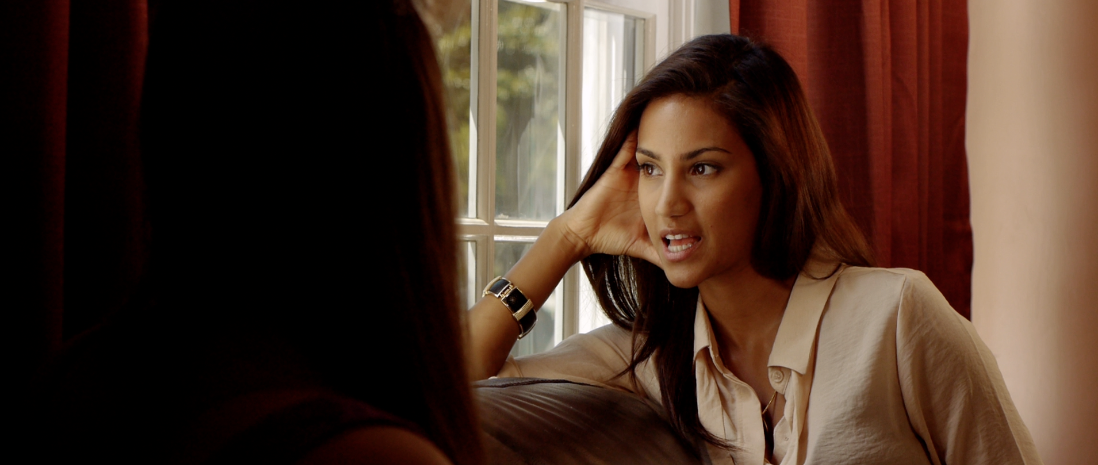

 Screen Shot 2012-08-10 at 7.26.45 PM.png1098 x 465 - 609K
Screen Shot 2012-08-10 at 7.26.45 PM.png1098 x 465 - 609K -
@stonebat its a nice coincidence.
F-stops relate to the diameter of the aperture. To get the amount of light that passes through, you have to square them to get the area of the "hole" (1.4->2, 2->4, 2.8->8, 4->16,...). Thats where you get the "every stop doubles/halfes the amount of light" comes from.
If placing a (point) lightsource in 3D-space (and its hard not to do so;-) you get the inverse square law of light fall off.
Two physically totally different things, but both can be discribed with a square law and so the same "shortcuts" can be applied.
-
@stonebat I have no idea. You'll have to ask someone more knowledgeable than me. My understanding is that the f/stop is a ratio. The ratio is between the diameter of the aperture in the lens and the focal length of the lens.
This is where T-stops differ, as T-stops are measured through the lens, and are a bit more accurate. T stops measure the amount of light transmitted through that particular lens.
-
I found this interesting. The familiar f-stops can be mapped into light loss in distance scale. f/2, 2.8, 4, 5.6, 8 are mapped into 2 meters, 2.8 meters, and so on.
e.g. Two light sources emitting same amount of light. One source is 4 meters away from a subject. To make one stop difference in incident light meter readings, place the other light source 2.8 meters (a stop gain) or 5.6 meters (a stop loss) away.
I wonder if that's how analog camera flash technique worked.
-
@shian can't wait for that tutorial you described in your second to last post! The one about showing how to light for a 5 stop range and different grading options!
-
@Imaginate it really depends on whether or not you have a 1 degree spot capability on your meter. BUT I'm shooting a new tutorial next week that might answer your question.
For those toying with the Ansel Adams Zone system, I'll give you these to help you. I'll be using this color chart a lot in the zone system tutorials, and a little bit in the 2nd part of the Intensity and falloff tutorial.
ColorChart shot in daylight at 200ISO Smooth (-2 all) with perfect exposure (2/3 over on gray card)
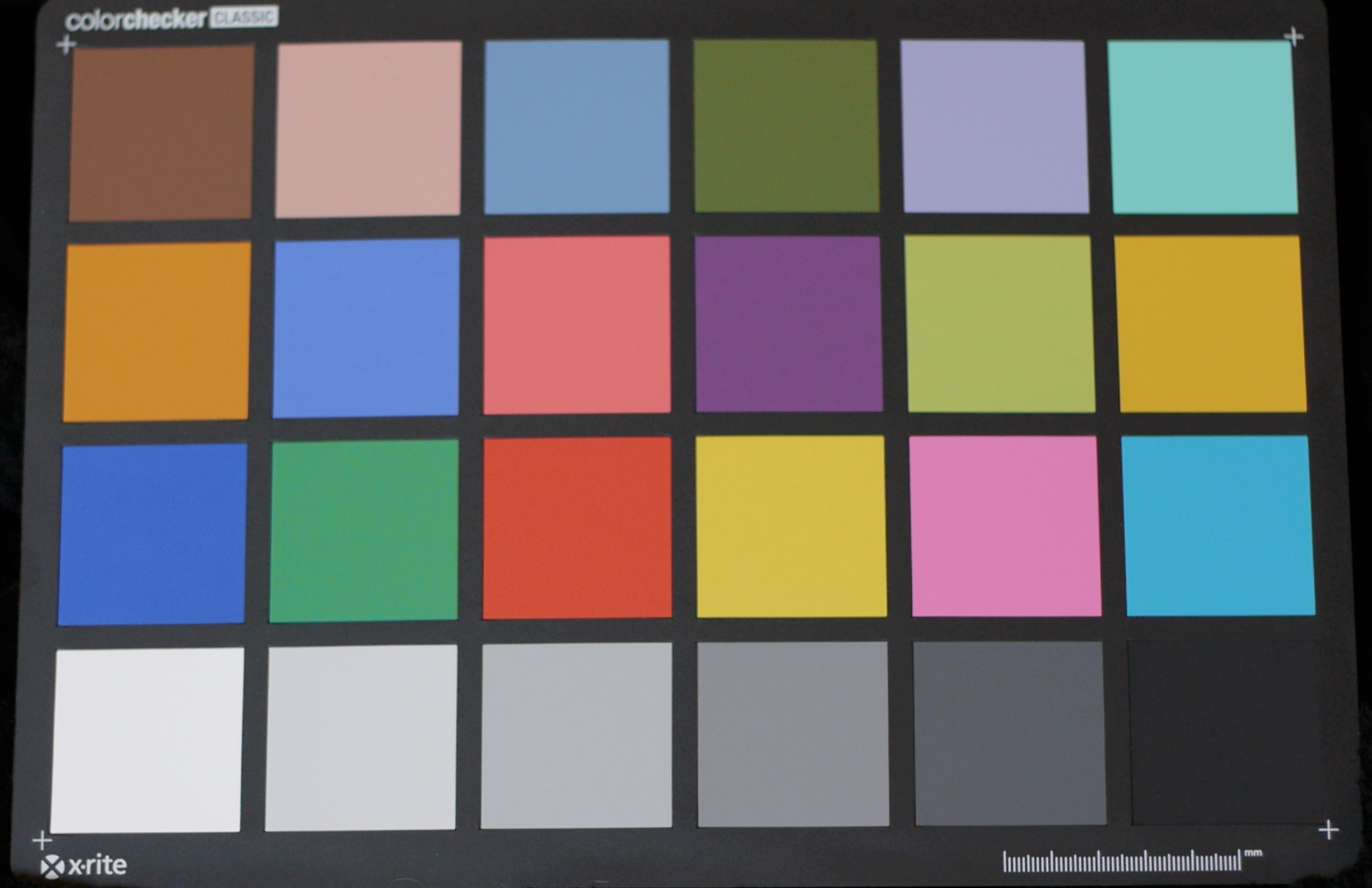
IRE cheat sheet for where in the WFM these colors fall when properly exposed. (I added contrast to make it more look more like the chart looks to the eye)
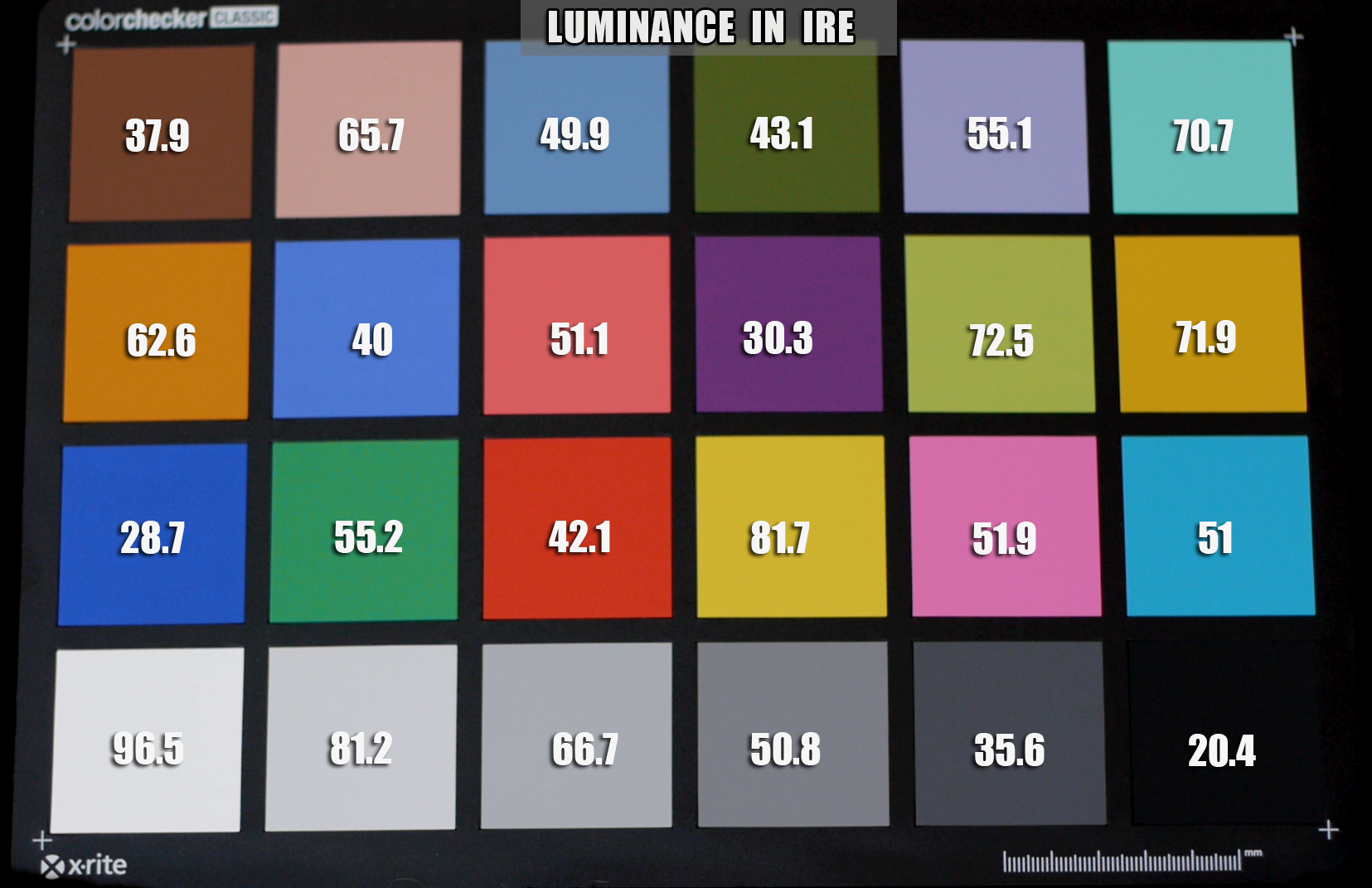
Full Chart
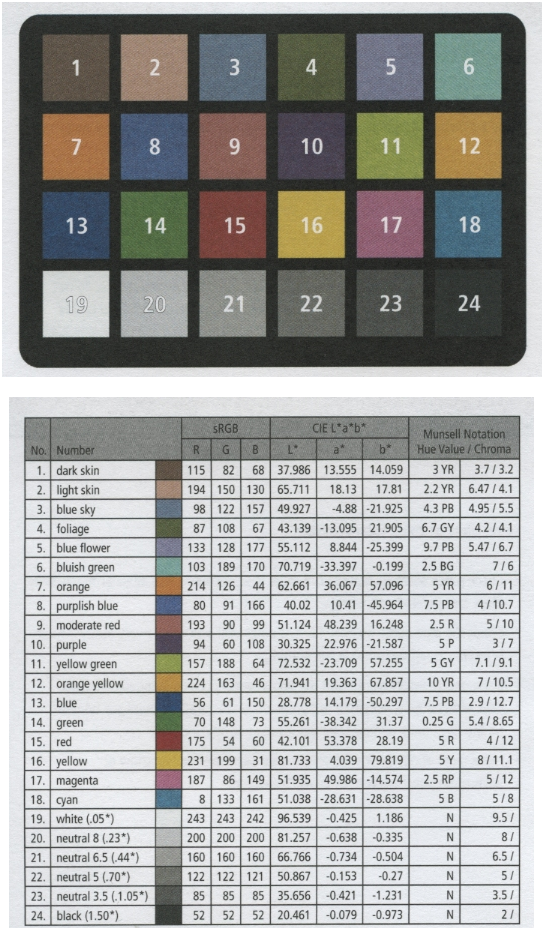

 chart.png1655 x 1071 - 2M
chart.png1655 x 1071 - 2M
 ColorChart IRE.png1655 x 1071 - 2M
ColorChart IRE.png1655 x 1071 - 2M
 colorchecker luma.png542 x 934 - 779K
colorchecker luma.png542 x 934 - 779K -
@shian you're right the card wasn't angled correctly. It was shot using 'smooth'. Both camera and card were handheld so the spot meter tends to jump around quite a bit.
I'm going into a six day outdoor/forested area shoot in september and one thing I'm particularly interested in is techniques in dealing with sky highlights in the background. ie. using double net scrims to knock down that light.
I know we have the highlights warning in the GH2, and it would be great to have a waveform monitor on set because in the example above it clearly shows whats happening with the sky peaking through the trees, but we wont have that luxury. Is there a technique using a handheld lightmeter to help measure those hotspots in the sky?
-
@AdR Unfortunately due to the nature of the forum I can't take it back. (You can't delete pics once you upload them) You happened to catch me on a day when I was dealing with some true morons (in real life), and I took it out on you. I apologize, as you were only trying to help. I did acknowledge the mistake, and It was something I caught after posting the video (by counting on my fingers, and then face palming myself), but didn't want to go back and confuse the issue further as most beginners use the in-cam meter and also do not count zero as a stop.
To explain. When metering, and reading contrast you only pay attention to the difference in stops, you don't spend a lot of time on set making sure all the integers are counted. (I always did suck at math.) Nobody says, "This light is at f4 that one is is at f2 - let's knock it down 3 stops to even it up. (Which is technically a 3 stop range) but only a 2 stop difference. I'm sure there is somebody reading this right now who's math is as dodgy as mine that is wondering how the hell f4 to f2 is 3 stops. (It's because it's f4, f2.8, and f2 - 3 actual stops, but a difference of 2 stops)
As I said, I'm trying to keep things simple, and when people come along and confuse the issue in various threads, I spend so much time trying to cut through the confusion and make things simple again that it makes me a little crazy. I'm all about simplicity... That is, until such time that one is abe to start thinking in this head space, and then explaining the full picture is merely a tiny bump in the road. I hope that makes sense.
@Imaginate Something about your WFM bothered me, and I just realized that this is an incorrect gray card reading. To properly use an 18% gray card; you must angle it between your light source (in this case the sun) and the lens and "bounce" or reflect that source into the lens. You'll notice a marked difference in luminance when this is done. It should instruct you to do this on the instructions that came with the card. This card is aimed almost dead front. If it were correctly angled, you wouldn't see long shadows from the child's fingers, and the gray card would read near the skin tone in terms of exposure, or if his skin is on the lighter side of the scale it should come in around 60-65IRE.
(I thought I made the gray card technique clear in the FS tutorial, please let me know if it wasn't clear.)
But that being said, you did manage to get a fairly balanced almost [bracketed] exposure sans grading, I can see into the shadows, and the highlights are not completely useless, but they are in that area where they become very hard to work with especially on his shirt.
This is why golden hour is so favorable, as it is a more manageable lighting environment than broad daylight, as this shot could be lit with simple reflectors or white bounce cards.
In the next tutorial, I am going to take a scene (similar to the Zacuto scene in that it will be shot out a window from inside) shot at noon with a 10 stop range 15EV-6EV naturally (see the above explanation), and compress it into the 5 stop zone. but first I'm going to "scout the location", plan the shoot, figure out which lights I need to bring, and then light the scene and shoot it. But I will also shoot the scene unlit, and then lit in a way that spreads the image across the full DR. Then I'll bring it all into AE and grade it. I'll do a light grade, and a heavy grade, so you can see all of your options and decide which technique works best for you.
-
@AdR: Well said.
-
@shian re the 5-stop range:
Please don't take this the wrong way, imagine it as a friendly word from a mate over a couple of pints at the local:
If you're going to hold yourself out as an educator, and charge money for a film school that you created, please get the facts straight.
I know it can sting to get caught in a mistake, especially when you're trying to build up your cred as an expert. Next time, please just acknowledge your oversight and correct it. A wee mistake like this doesn't have to turn into drama and "why do I bother?" Who wants to work with that guy? Or learn from him?
It really matters when you teach students something inaccurate. Teaching them that a 4-stop range has a 16:1 ratio could really confuse them if they try to learn more about photography. Don't you owe it to them to teach it to them correctly?
Keep up the good work, and lighten up a bit. Everybody makes mistakes. It's how you come back from them that shows who you are.
Cheers.
-
Yes, to your last.
Did you shoot Nostalgic?
Howdy, Stranger!
It looks like you're new here. If you want to get involved, click one of these buttons!
Categories
- Topics List23,913
- Blog5,718
- General and News1,332
- Hacks and Patches1,148
- ↳ Top Settings33
- ↳ Beginners254
- ↳ Archives402
- ↳ Hacks News and Development56
- Cameras2,342
- ↳ Panasonic984
- ↳ Canon118
- ↳ Sony154
- ↳ Nikon95
- ↳ Pentax and Samsung70
- ↳ Olympus and Fujifilm98
- ↳ Compacts and Camcorders295
- ↳ Smartphones for video96
- ↳ Pro Video Cameras191
- ↳ BlackMagic and other raw cameras116
- Skill1,959
- ↳ Business and distribution66
- ↳ Preparation, scripts and legal38
- ↳ Art149
- ↳ Import, Convert, Exporting291
- ↳ Editors190
- ↳ Effects and stunts115
- ↳ Color grading197
- ↳ Sound and Music280
- ↳ Lighting96
- ↳ Software and storage tips266
- Gear5,407
- ↳ Filters, Adapters, Matte boxes344
- ↳ Lenses1,577
- ↳ Follow focus and gears93
- ↳ Sound496
- ↳ Lighting gear313
- ↳ Camera movement230
- ↳ Gimbals and copters302
- ↳ Rigs and related stuff271
- ↳ Power solutions83
- ↳ Monitors and viewfinders339
- ↳ Tripods and fluid heads139
- ↳ Storage286
- ↳ Computers and studio gear559
- ↳ VR and 3D248
- Showcase1,859
- Marketplace2,834
- Offtopic1,314







